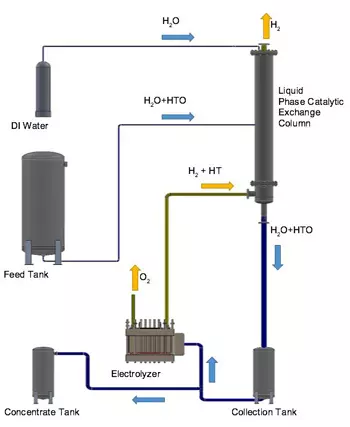
The decontamination of Tritium (T) is particularly problematic: it is a special form of hydrogen that creates tritiated water (HTO vs. H2O), which does not lend itself to removal by conventional technologies.
Tritium is routinely released into the environment by commercial nuclear power plants. Until now, no technology existed to remove low levels of tritium contamination economically. We are changing the paradigm by blending complex innovation and simple economics.
Decades-old problem calls for a clean alternative
Traditional methods of Tritium removal focused on cleaning “heavy water,” where Tritium is found in larger quantities, for the purpose of recycling the water back into nuclear reactors. However, when Tritium is present in smaller concentrations, this technology is prohibitively expensive.
Through our new Tritium-removal technology, we offer another way that utilities can strengthen trust with surrounding communities and to fulfill nuclear power’s clean energy promise.
Our Modular Detritiation System (MDS®): An Advanced Separation Technique for Tritium

Our Modular Detritiation System is based on proven technology that has been used commercially for over 30 years, providing nuclear operators an economical path to strengthen public trust and improve energy production with a new – and proven way – to remove Tritium.
The MDS® is a Tritium management tool for processing large volumes of light water across a range of concentrations. This technology is based on the working principle of combined electrolysis catalytic exchange (CECE) and releases only clean oxygen and hydrogen with no liquid effluent. The technology builds on proven heavy water solutions, and although developed with a focus on light water, it can also be adapted for use in heavy water detritiation.
The system is designed to reduce the volume of tritiated water which allows for reuse and recycling of Tritium instead of its release into the environment. This process takes diluted tritium and concentrates it so it can be recycled or reused while reducing the amount of Tritium released to the environment.
Economical and scalable design
Reduces volume of water by 100,000 times
All Tritium to be captured in metal hydride at molecular level and stable up to 600° C
No water remains after treatment is complete
The MDS® has been in operation for over 1,000 hours over a 9-month period. Our U.S. Richland, Washington facility continues to support verification testing and scoping studies.

